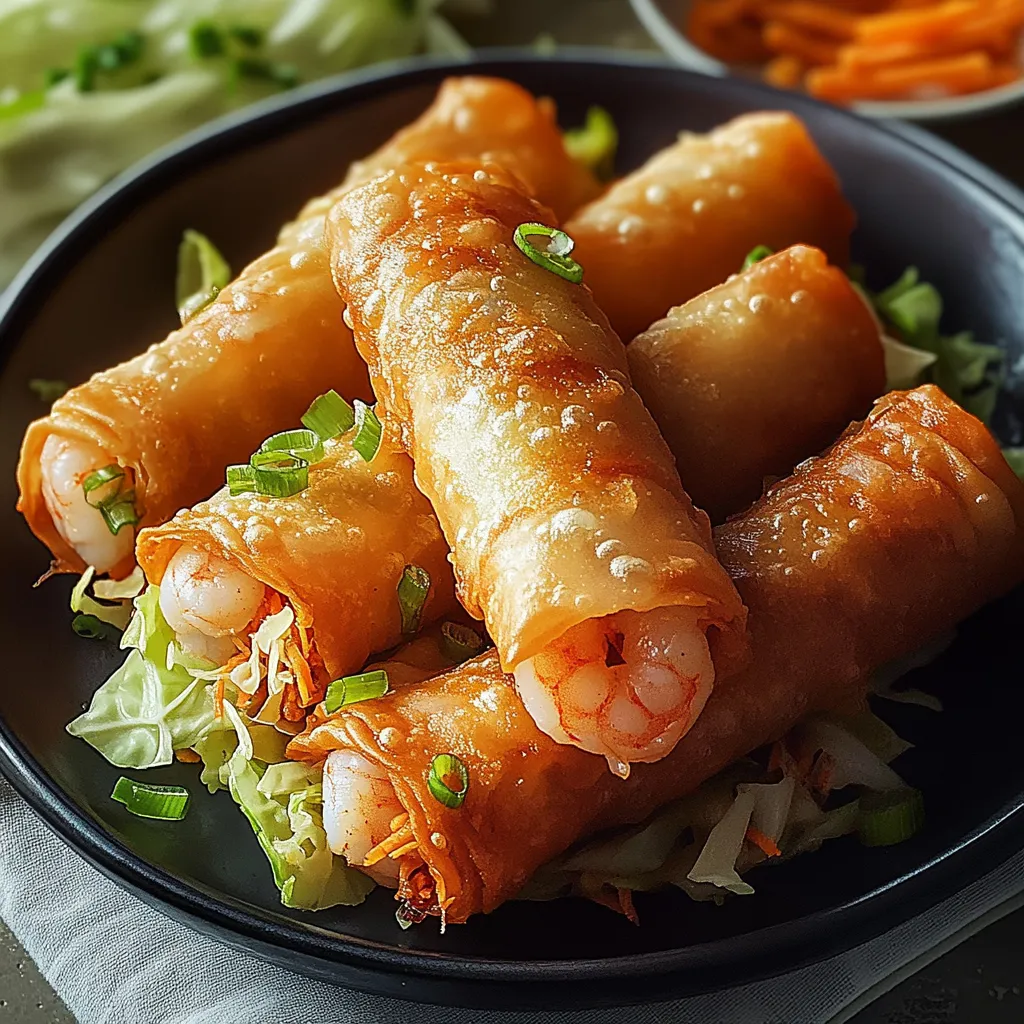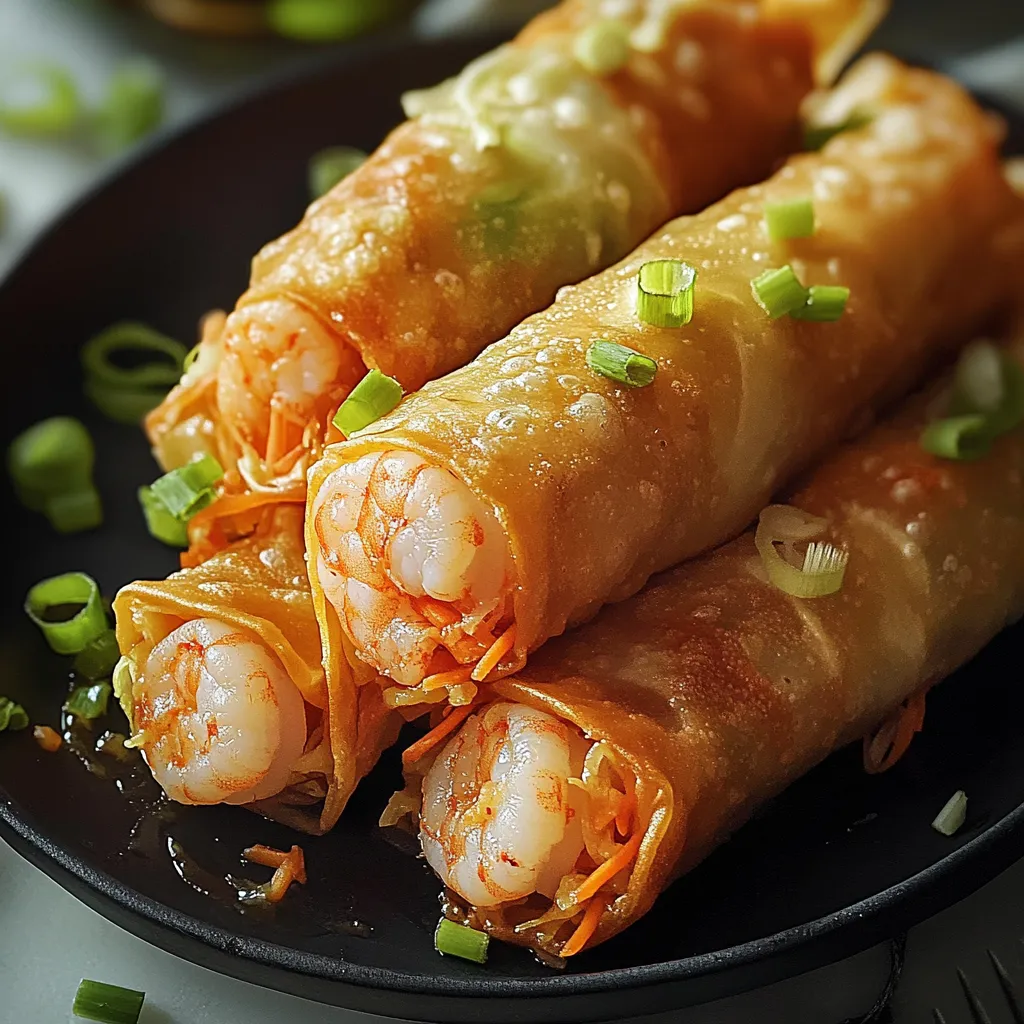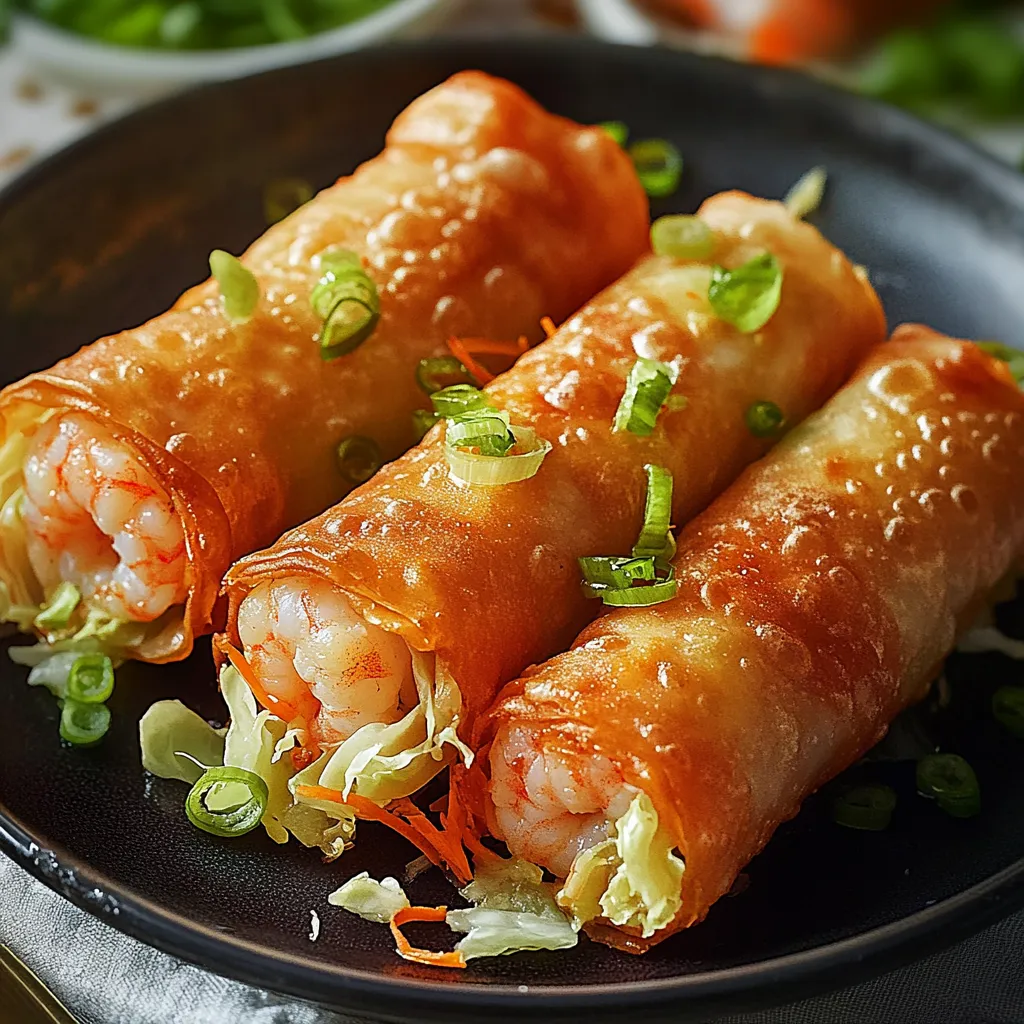 Pin it
Pin it
Crispy shrimp and cabbage egg rolls bring restaurant-quality flavor right to your kitchen with minimal effort. The delicate balance of succulent shrimp and fresh cabbage creates a filling that stays juicy inside while the wrapper turns gloriously golden and crunchy. Each bite delivers a perfect combination of seafood sweetness and vegetable freshness wrapped in that irresistible crackly exterior that makes egg rolls so beloved. Making these at home lets you control exactly what goes into them while impressing family and friends with your culinary skills.
I made these for my sister's birthday gathering last month, and they disappeared faster than any other appetizer on the table. My nephew, who normally avoids seafood, asked for seconds and then requested I teach him how to make them himself!
Secret Ingredient Selection
- Shrimp: Select medium-sized shrimp (about 1 pound, peeled and deveined) for the perfect texture balance. Fresh shrimp provides sweet flavor that frozen alternatives simply cannot match.
- Cabbage: Choose firm green cabbage (2 cups when shredded) with tight leaves for maximum crunch factor and natural sweetness that complements the shrimp beautifully.
- Egg Roll Wrappers: Look for refrigerated wrappers that feel pliable but not sticky. Keep them covered with a damp cloth while working to prevent drying and cracking.
- Garlic: Fresh cloves (2) provide aromatic depth that bottled versions lack. Mince them finely to distribute flavor evenly throughout the filling.
- Umami Boosters: High-quality soy sauce (2 tablespoons) and sesame oil (1 tablespoon) create depth that transforms simple ingredients into something extraordinary.
Creating Perfect Rolls
- Prepare Fragrant Filling:
- Place your skillet over medium heat and add a small amount of neutral oil. Toss in finely minced garlic and cook just until the aroma blooms, about 30 seconds. Add your chopped shrimp along with soy sauce and sesame oil, stirring frequently until the shrimp transform to a beautiful pink color, which typically takes 3 to 4 minutes. Introduce your finely shredded cabbage and continue cooking until it softens slightly while maintaining some pleasant crunch, approximately 2 to 3 more minutes. Transfer this mixture to a bowl and allow it to cool before assembly to prevent soggy wrappers.
- Master Assembly Technique:
- Position one wrapper on your work surface in a diamond orientation with a point facing you. Spoon approximately two tablespoons of your cooled filling onto the lower portion of the wrapper. Fold the bottom point up and over the filling, pulling it snugly against the mixture to eliminate air pockets that could cause bursting during cooking. Bring both side points toward the center, creating an envelope shape around your filling. Continue rolling upward with gentle tension until you reach the final point. Secure the edge with a small amount of water if needed. Repeat this process with your remaining wrappers and filling.
- Perfect Cooking Methods:
- For traditional deep frying, heat your oil to exactly 350°F in a deep, heavy pot. Carefully place a few rolls into the hot oil, avoiding overcrowding which lowers temperature and creates sogginess. Fry until all sides achieve a gorgeous golden brown, approximately 3 to 4 minutes, turning halfway through. Remove to paper towels positioned on a cooling rack, which allows air circulation and prevents sogginess. For a lighter version, preheat your oven to 425°F and arrange rolls on a baking sheet with a light coating of cooking spray. Bake until crispy and golden, about 15 to 20 minutes, remembering to turn them halfway through for even browning.
 Pin it
Pin it
My grandmother taught me that cabbage should never be overcooked in egg rolls. She always insisted on keeping it slightly crisp, creating that wonderful textural contrast with the tender shrimp. This technique transformed my egg rolls from good to exceptional, and I've never looked back since learning this family secret.
Perfect Pairings
Serve these golden treasures alongside small bowls of contrasting dipping sauces. Sweet chili sauce provides heat and sweetness, while classic soy sauce mixed with a few drops of sesame oil offers savory depth. For special occasions, arrange them on a platter scattered with thinly sliced scallions and sesame seeds for visual appeal. These egg rolls complement Asian-inspired meals perfectly but also pair wonderfully with simple vegetable sides for a complete meal.
Exciting Variations
Consider adding finely grated carrot or minced water chestnuts to the filling for additional texture and nutritional value. For those who prefer different proteins, substitute finely diced chicken thighs or crumbled firm tofu for the shrimp. The cooking process remains identical. Vegetarians can enjoy an equally delicious version using finely chopped mushrooms which provide wonderful umami flavor. Adjust the spice level by incorporating sriracha or ginger into the filling mixture according to your personal preference.
Freshness Preservation
Cool any remaining egg rolls completely before storing them properly. Place them in a container lined with paper towels to absorb excess moisture, which helps maintain their crispness. They remain perfectly good refrigerated for up to three days. When reheating, avoid the microwave which creates sogginess. Instead, place them in a 300°F oven for approximately 10 minutes until heated through and recrisped. If you've frozen uncooked rolls, they can go directly from freezer to oil or oven with just a slight increase in cooking time.
 Pin it
Pin it
Frequently Asked Questions
- → Can I make these egg rolls ahead of time?
- Yes! You can prepare the filling and even assemble the egg rolls up to 24 hours in advance. Store the filled but uncooked rolls in the refrigerator with a damp paper towel over them to prevent drying. Fry them just before serving for the best texture.
- → What's the best oil for frying egg rolls?
- Vegetable, canola, or peanut oil work best for frying egg rolls because they have high smoke points and neutral flavors. Maintain the oil temperature around 350°F for that perfect golden-brown exterior.
- → Can I use pre-cooked shrimp for this recipe?
- Yes, you can use pre-cooked shrimp, but add them at the very end of cooking the vegetable mixture to avoid overcooking and making them tough. Just warm them through before removing from heat.
- → How do I prevent egg rolls from getting soggy?
- Ensure your filling has cooled before wrapping, don't overfill the wrappers, and make sure your oil is hot enough before frying. After frying, drain on paper towels and serve immediately for maximum crispiness.
- → Can I freeze these shrimp egg rolls?
- Absolutely! Freeze them after assembling but before cooking. Arrange in a single layer on a baking sheet until frozen solid, then transfer to a freezer bag. When ready to eat, fry directly from frozen, adding 1-2 minutes to the cooking time.
